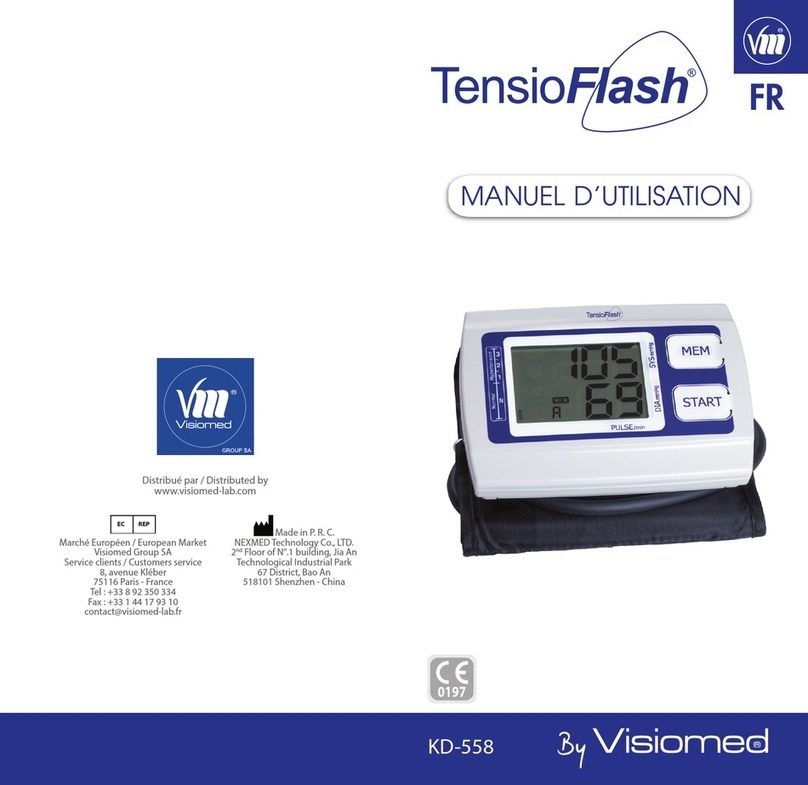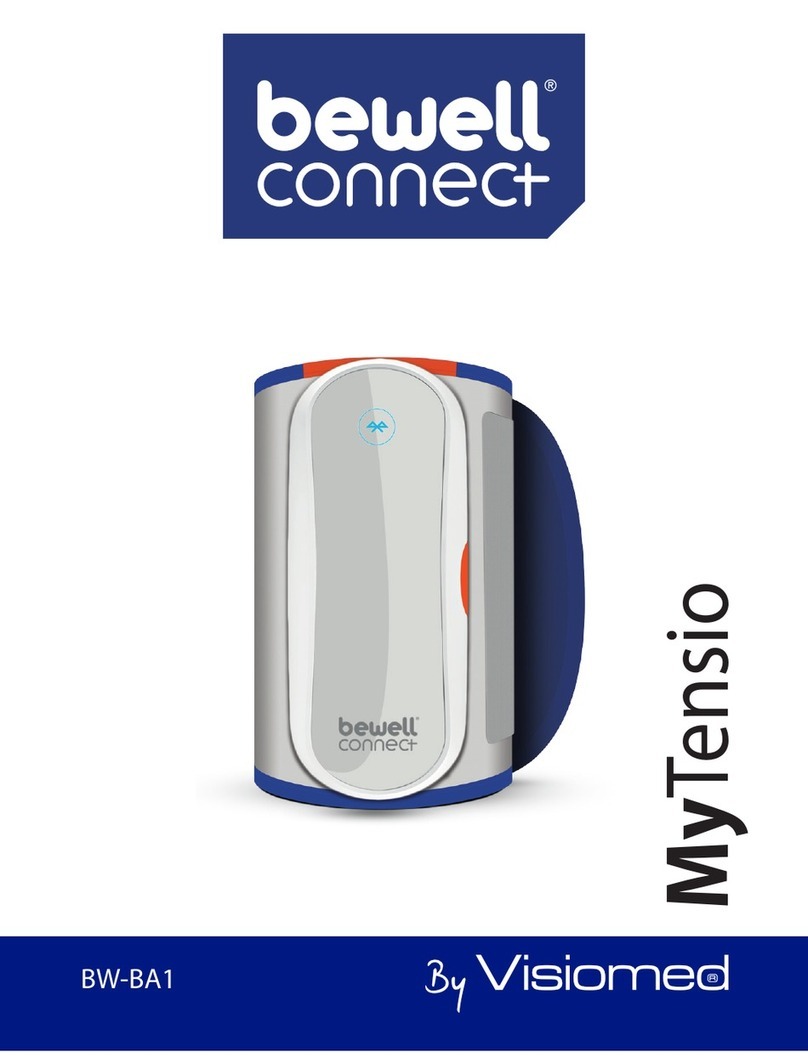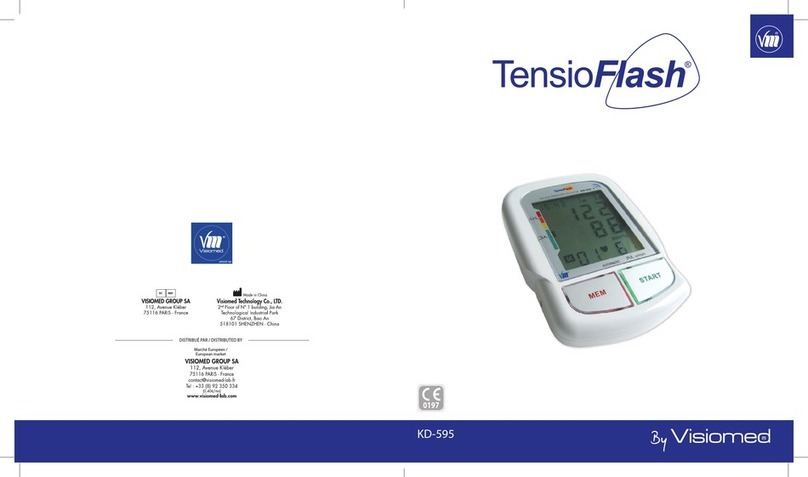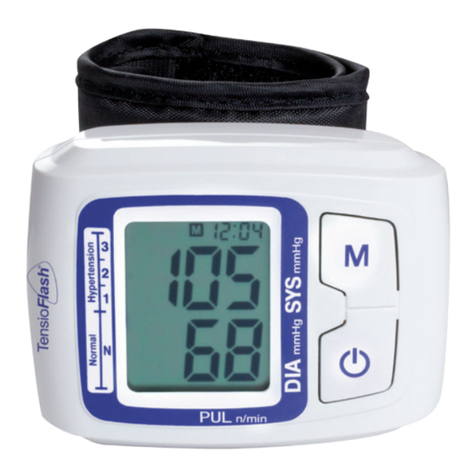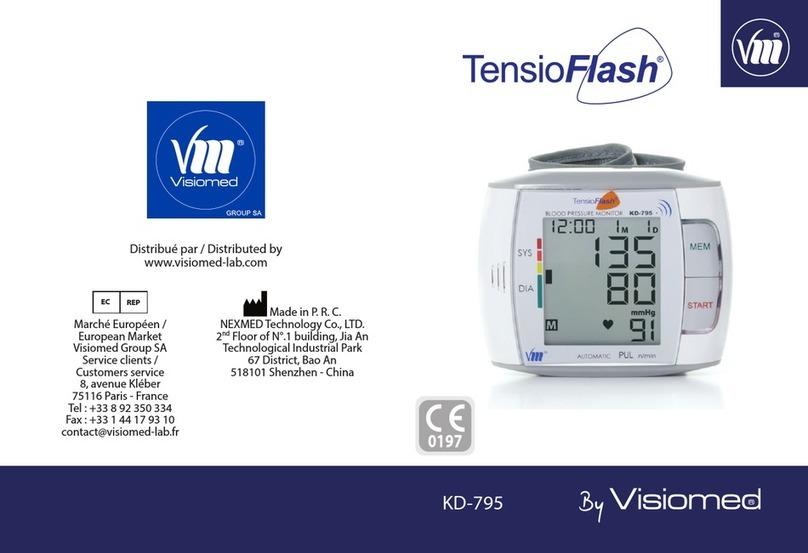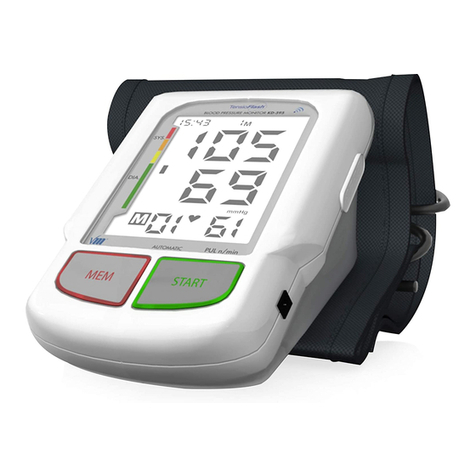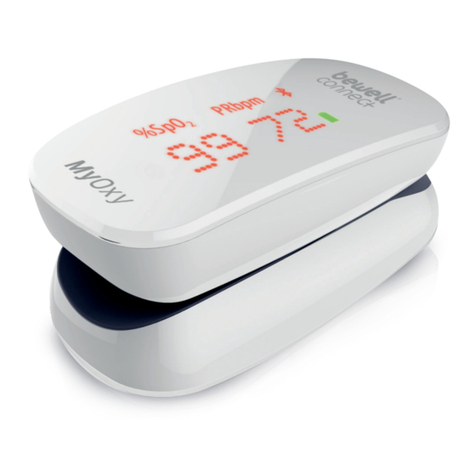7. PARAMÈTRAGE DE LA DATE ET DE L’HEURE
1. Appuyez sur la touche START et MEM simultanément. Le mois clignote.
2. Utilisez la touche MEM pour régler le mois.
3. Appuyez sur la touche START pour sauvegarder vos réglages et acher le jour.
4.
Utilisez la touche MEM pour régler le jour.
5. Suivez les étapes pour régler l’heure puis les minutes.
6. Validez en appuyant sur START.
7. La date et l’heure doivent être réajustées à chaque changement de piles.
8. SUGGESTIONS AVANT MESURE
1. Évitez de manger, fumer, faire de l’exercice 30 minutes avant toute prise de
mesure. Restez calme durant les 15 minutes précédant la prise de tension.
2. Le stress fait monter votre tension artérielle. Evitez la prise de mesure en période
de stress.
3. Il est préférable de prendre sa tension artérielle au bras gauche.
4. La prise de tension doit être effectuée dans un endroit calme, vous devez être
détendu et assis, le bras posé sur une table de façon à ce que le bracelet se situe
au même niveau que votre cœur.
5. Asseyez-vous sur une chaise, les pieds bien à plat (ne pas croiser les jambes),
posez votre bras gauche sur la table, paume vers le haut.
6. Restez immobile et ne parlez pas durant la prise de tension.
7. Notez vos résultats de pression artérielle et pulsations afin de les présenter à
votre médecin. Vous devez veiller à prendre votre tension artérielle de façon
constante, au même moment de la journée.
9. UTILISATION DU BRACELET
1. Retirez tous bijoux (montre, bracelet…) de votre main gauche.
2. Paume de la main vers le haut, enfilez le bracelet de façon à ce que l’écran
d’affichage du moniteur soit face à votre visage dans le sens de la lecture.
3. Le bracelet doit se situer à un ou deux centimètre de votre paume.
4. Lorsque le bracelet est correctement positionné, maintenez-le en place en
pressant fermement la languette contre le scratch.
Notes :
- Effectuez les mesures toujours au même bras (normalement à gauche) pour une
meilleure interprétation des résultats. S’il ne vous est pas possible d’enfiler le bracelet
sur le bras gauche, vous pouvez utiliser votre bras droit.
10. MESURE DE LA PRESSION ARTÉRIELLE
1. Appuyez sur la touche START. Toutes les icônes s’affichent à l’écran.
2. L’appareil affiche «zero» à l’écran lorsque l’appareil est prêt à prendre la mesure. Le bracelet se
gonfle automatiquement. Lorsque l’écran affiche la valeur maximale la pression se relâche, les
battements de cœur sont captés. L’air est automatiquement évacué du bracelet.
3. Une fois la mesure prise, l’écran affiche les valeurs systolique, diastolique puis les pulsations/
minute.
4. Les données sont mémorisées automatiquement.
5. Appuyez de nouveau sur START pour éteindre l’unité. En cas d’oubli, l’unité s’arrête
automatiquement après environ 1 minute.
6. Si la pression du bracelet est trop importante ou que vous vous sentez mal à l’aise, appuyez
immédiatement sur la touche START pour dégonfler le bracelet.
Notes :
- La valeur mesurée sera trop faible si le bracelet est maintenu au-dessus du niveau du cœur, et trop élevée
s’il est maintenu au-dessous du niveau du cœur.
